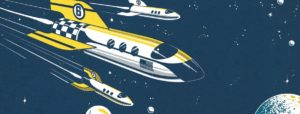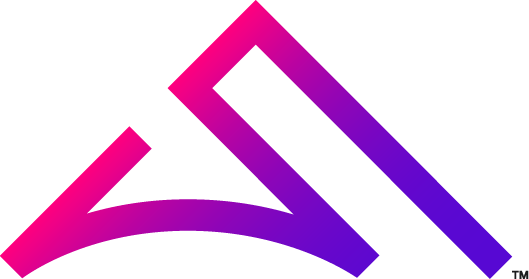After redesigning its homepage with Atlantic BT, Martin Marietta achieved a 50% increase in new users and reduced its site bounce rate by 30%. In addition, our specially-designed features better prepared Martin Marietta to close big deals with potential customers.
However, you don’t care about any of that, because you’re wondering about the featured image of Paul Ryan, the speaker of the House of Representatives, kissing a fish.
The image you choose for your content writing matters. Pick something irrelevant (like Paul Ryan kissing a fish) or generic (like “moms shopping”), and you could lose your audience before they read your first sentence. To nail your users’ attention and motivate them to read your content, your accompanying images need to be relevant, arresting, and (ideally) unique.
Choosing a Relevant Image
This point might seem like low-hanging fruit. After all, how hard is it to find an image that matches the title of your content? This is when it’s important to remember that relevant does not equal generic. Otherwise you’ll end up using the same “business people at a meeting using tablets” image as every other B2B blog on the internet.
So how do you choose a relevant image that isn’t generic? One tactic is to simply use Google Image search to verify that your image isn’t already in use on several sites—this will protect you from going with an overused image. However, this practice won’t help you choose an image that visually echoes the big idea of your post.

Better answer? Go deeper with your definition of “relevant.” If your content is focused on boosting the speed at which a business operates, focus on the word “speed” rather than “business.” This more abstract thinking guided our choice of image in a blog comparing the speed of different Content Delivery Networks; rather than using a run-of-the-mill graph of the different networks, we depicted several space ships racing around a planet to symbolize the different CDNs. This image was relevant to the blog without being generic, making it more likely to catch a reader’s eye.
Choosing an Arresting Image
When I was an undergrad assistant in the Duke University archives, I spent hours sorting through all manner of historical documents. Mostly these were family records of university faculty, the memos of NC politicians, and various items which weren’t of much interest to a college student. One day I was sorting through a stack of records from the American Socialist Party in the 1930s. I flipped through letters written by party leaders, news articles about rallies, and suddenly I saw a man bleeding out from a gunshot wound. This photograph chilled my blood. I flipped it over to learn more about it, and handwritten scrawl told me the story of a protester who was shot at a rally for being a suspected communist. In the midst of a dry day of skimming and sorting, my attention had been arrested by a single powerful image.
The term “arresting” isn’t often found in content marketing guides (which is one reason I chose it). An arresting image is one that grabs the reader’s attention by stopping them in their tracks; it breaks up the monotony of browsing a web page or brochure of printed documents with a picture that seizes the viewer by the curiosity and refuses to let go. Done right, anyone who sees this image will respond with “Wait, what is this?” and immediately open the article to find out.

As you choose arresting images, it’s important than your provocative visual grabs attention for the right reasons. After all, violent or pornographic imagery is certainly arresting, but it isn’t going to attract relevant traffic to your content. Instead of simply equating “arresting” with “shocking,” it’s better to think of your arresting image as an exciting opening to a story you’re getting ready to tell. Take our recent post about a major security update needed for Magento-based eCommerce stores. The image here depicts a businessman so focused on money that he’s blind to the enormous rock threatening to crush him and his newfound earnings. The inherent drama of this image tells an arresting story—something really bad is threatening this person, and we need to find out what it is if we also don’t want to get hurt.
Creating a Unique Image
After the last two points, the requirements for an effective image might seem daunting—how are you going to find an image that is relevant to your content, not generic, AND arresting enough to grab a reader’s attention? There are two answers, and both are going to require some effort.
First, don’t look for your unique image on the same stock photo sites as your competitors. While these sites are a solid way to find images relevant to a business context, you’re practically guaranteed to pick an image that’s already being used elsewhere. To find a more unique image, steer clear of realistic stock photography and browse more abstract image sites. One of our favorite sources at Atlantic BT is Pop Ink by CSA; these images bring a unique energy to our blog by combining a distinct and fun art style that also can be searched by subject matter or theme.

The second way to choose a truly unique image for your content is to design the image yourself. If you have a designer or digital artist on staff, give this person some thematic ideas of what your content is about, then set them loose to create a specialized image to fit. That was how we approached the blog image for our annual Pumpkin Chunkin event at Atlantic BT. We planned this year’s theme, The Pumpkin Aeronautics Initiative, with one of our on-staff designers and asked her to create an image that combined tongue-in-cheek scientific inquiry with pumpkins hitting the pavement. The result was a truly unique image that helped drive record attendance to this year’s pumpkin-launching party.
Worth a Thousand Words (and Extra Effort)
If you believe the old adage that “a picture is worth a thousand words,” then you believe that an image can speak more powerfully to the minds and hearts of your audience than a hefty dose of the right words. This means it’s worth the extra time and energy to find the perfect visual accompaniment to your written content.
Ultimately, you want the image you choose to be a powerful visual representation of the content story you’re telling—not just a photograph that looks nice. By pairing your content with relevant, arresting, and unique imagery, you do more than stand out from the internet crowd. You offer your reader an invitation into a meaningful digital story well-worth their undivided attention.
Now you just need a riveting content story to match. Why not start with an engaging opening?












